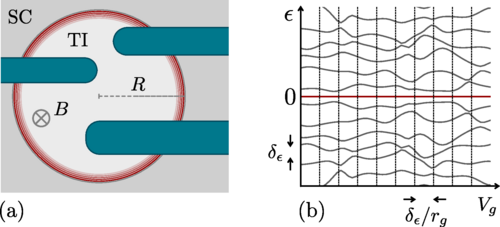Cross-Site Paper on Statistical Majorana Bound State Spectroscopy
The groups of Fabian Hassler (RWTH) and Reinhold Egger (HHU Düsseldorf) have been cooperating on several projects to theoretically investigate signatures of Majorana zero modes that are relatively easy to measure and provide a high level of confidence. In recent work which also involved the Altland group (Cologne), they have outlined a statistical detection protocol that could provide unambiguous evidence for Majorana bound states from sequences of conventional tunnel spectroscopy data. The protocol can be applied to any Majorana platform. The results were published in Physical Review Letters this March.
Tunnel spectroscopy data for detecting Majorana states is often criticized for its susceptibility to misinterpretation of genuine Majorana states with low-lying Andreev bound states. To address this issue, the authors team suggested a protocol that extends single-shot measurements to sequences performed at varying system parameters, which requires only moderate effort for current experimental platforms. They demonstrated how such sampling resolves the statistics of Andreev side lobes, providing compelling evidence for the presence or absence of a Majorana center peak.

Statistical spectroscopy setup. Left: a vortex is defined by a TI coated with an s-wave superconductor (SC) except for a region of radius R which is threaded by ν magnetic flux quanta. Electrostatic finger gates effectively change the disorder configuration. Red lines indicate spatial support of a Majorana edge mode. Right: in-gap spectrum vs gate voltage Vg obtained by simulating the setup in (a). By varying Vg, Andreev state energy levels change on a scale set by the level spacing δε. Sequences of independent disorder realizations are separated by δVg≈δε/rg (see main text) as marked by the vertical lines. (Figure 1 of the publication)
Publication:
Statistical Majorana Bound State Spectroscopy.
Alexander Ziesen, Alexander Altland, Reinhold Egger, and Fabian Hassler
Phys. Rev. Lett. 130, 106001 – Published 8 March 2023; DOI: https://doi.org/10.1103/PhysRevLett.130.106001